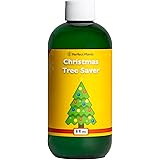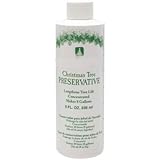If you’ve ever found yourself wondering about the yellow liquid in aloe vera, you’re not alone. This common query often arises when people notice a discoloration in their beloved aloe vera plant. But fear not, there’s a simple solution to this mystery.
In this article, we’ll delve into the world of aloe vera and its yellow liquid, uncovering the reasons behind this natural occurrence. So, if you’re ready to unravel the secrets of the yellow liquid in aloe vera, let’s dive right in!
Yellow Liquid in Aloe Vera: Exploring its Causes and Benefits
Aloe vera is a popular plant known for its myriad health benefits. From soothing sunburns to improving digestion, this succulent plant has been widely used for centuries. However, you may have noticed that sometimes aloe vera gel can have a yellow liquid or juice seeping out of it. This yellow liquid may raise questions about its safety, effectiveness, and potential benefits. In this comprehensive guide, we’ll delve into the causes of yellow liquid in aloe vera and explore its potential benefits.
What Causes Yellow Liquid in Aloe Vera?
The yellow liquid found in aloe vera is known as aloe latex or aloe juice. It is derived from the inner lining of the plant’s leaves, just beneath the outer green rind. The presence of aloe latex can vary from plant to plant, and not all aloe vera varieties produce it in significant quantities. Here are a few factors that may contribute to the presence of yellow juice in aloe vera:
1. Anthraquinones
Anthraquinones are naturally occurring compounds found in aloe vera. These compounds, including aloin and barbaloin, give the gel its characteristic yellow color. Anthraquinones also possess laxative properties, which can be beneficial for certain health conditions. However, they may cause adverse effects when consumed excessively.
2. Plant Maturity
The age and maturity of the aloe vera plant can influence the presence of yellow liquid. Younger plants generally produce less aloe latex, resulting in a clearer gel. As the plant matures, the concentration of aloe latex increases, leading to a yellowish tinge in the gel.
3. Harvesting Techniques
The way aloe vera is harvested can also affect the presence of yellow liquid in the gel. Improper harvesting methods, such as not allowing enough time for the latex to drain from the leaves, can result in more aloe latex being present in the final product.
Benefits of Yellow Liquid in Aloe Vera
The presence of yellow liquid in aloe vera may have its own set of benefits. While the core benefits of aloe vera gel remain consistent, the additional advantages associated with aloe latex can provide unique health properties. Here are some potential benefits of yellow liquid in aloe vera:
1. Laxative Properties
Aloin and other anthraquinones found in aloe latex have long been recognized for their laxative effects. Consuming aloe latex in small amounts may help relieve occasional constipation or promote regular bowel movements. However, it’s important to note that excessive consumption of aloe latex can have adverse effects, including stomach cramps and diarrhea.
2. Digestive Health Support
Due to its laxative properties, aloe latex may also aid in overall digestive health. It can help regulate bowel movements, potentially reducing discomfort associated with digestive issues like irritable bowel syndrome (IBS) or occasional indigestion.
3. Potential Antioxidant and Anti-inflammatory Effects
Some studies suggest that aloe latex may possess antioxidant and anti-inflammatory properties. These properties can help combat oxidative stress and reduce inflammation, which are often underlying factors in various chronic diseases.
Read More: Exploring Monstera Aerial Roots: A Guide
Safety Considerations and Proper Usage
While aloe vera gel and aloe latex can provide potential benefits, it is essential to exercise caution and use them appropriately. Here are a few safety considerations and guidelines to keep in mind:
- Consult a healthcare professional before using aloe vera products containing yellow liquid, especially if you are pregnant, breastfeeding, or have existing medical conditions.
- Avoid consuming aloe latex in excessive amounts, as it may cause abdominal pain, cramping, and diarrhea.
- Always read product labels and follow recommended dosages carefully.
- If you are allergic to plants in the Liliaceae family (such as onions, garlic, or tulips), you may also be allergic to aloe vera.
- Be cautious with homemade aloe vera remedies, as the concentration of aloe latex in the gel may vary, leading to unpredictable effects.
Remember, aloe vera gel without yellow liquid is still highly beneficial and can be a safer option for topical use. If you are uncertain about using aloe vera products internally, consider consulting your healthcare provider for personalized advice.
Conclusion
Yellow liquid in aloe vera, also known as aloe latex, can be a natural occurrence in certain varieties of the plant. While aloe latex has its own set of potential benefits, including laxative properties and support for digestive health, it is crucial to use it judiciously and under professional guidance. The presence of yellow liquid should not deter you from reaping the benefits of aloe vera gel, which is widely regarded for its soothing properties and numerous applications. As with any natural remedy, it’s always best to approach it with knowledge and caution to ensure your safety and well-being.
How to Remove Yellow Poison Of Aloe Vera #lifehacks #kitchenhacks #shorts #aloevera #ashortaday
Frequently Asked Questions
Frequently Asked Questions (FAQs)
What does the yellow liquid in aloe vera indicate?
Aloe vera plants contain a yellow liquid called aloin, which is found in the latex layer beneath the outer leaf. It indicates the presence of anthraquinones, a natural compound known for its laxative properties.
Is the yellow liquid in aloe vera toxic?
The yellow liquid, aloin, found in aloe vera can be potentially toxic when consumed in large quantities. It is advisable to remove the yellow liquid before using the gel or consuming aloe vera products.
How can I remove the yellow liquid from aloe vera gel?
To remove the yellow liquid from aloe vera gel, you can follow these steps:
1. Cut the aloe vera leaf from the plant close to the base.
2. Allow the yellow liquid to drain out for a few minutes.
3. Rinse the cut leaf under running water to remove any remaining yellow liquid.
4. Gently squeeze the leaf to extract the clear gel, discarding the yellow liquid.
Does the yellow liquid in aloe vera affect the quality of the gel?
The yellow liquid in aloe vera does not necessarily affect the quality of the gel. However, some people prefer to remove it due to its potential laxative properties and bitter taste.
Can I use aloe vera gel with the yellow liquid for external purposes?
While the yellow liquid in aloe vera is not harmful to the skin, it can cause staining. If you are using aloe vera gel for external purposes and do not mind the staining, you can still use it without removing the yellow liquid.
Can I still use aloe vera gel if I accidentally mixed it with the yellow liquid?
If you accidentally mix a small amount of the yellow liquid with aloe vera gel, it is generally safe to use. However, for optimal benefits and to avoid any potential adverse effects, it is recommended to remove the yellow liquid and use only the clear gel.
Is the yellow liquid in aloe vera present in all varieties of aloe plants?
The yellow liquid, aloin, is primarily found in the latex layer of certain aloe vera varieties, such as Aloe barbadensis Miller. Not all aloe plants contain the same level of aloin, so it is important to identify the specific variety before use.
Are there any benefits to consuming the yellow liquid in aloe vera?
While the yellow liquid in aloe vera has laxative properties, its consumption is not recommended without proper guidance. It is best to consult a healthcare professional before considering any internal use of aloe vera or its components.
Read More: How To Revive Overwatered Lavender
Final Thoughts
The yellow liquid in aloe vera, also known as aloe vera latex or aloe vera sap, contains a compound called aloin. Aloin has been found to have laxative properties, which can aid in digestion and relieve constipation. However, it is important to note that the yellow liquid should be used with caution, as excessive consumption or improper preparation may lead to potential side effects. It is advisable to consult a healthcare professional before using aloe vera latex for any purpose.
Furthermore, when purchasing aloe vera products, it is recommended to choose ones that have undergone proper processing to remove the yellow liquid, ensuring a safe and beneficial experience.
Auto Amazon Links: No products found.
Perfect Plants Christmas Tree Saver 8oz. | Easy Use Xmas Tree Preserver Food | Have Healthy Green Christmas Trees All Holiday Season
$9.97 (as of December 13, 2025 05:07 GMT +00:00 - More info- Product prices and availability are accurate as of the date/time indicated and are subject to change. Any price and availability information displayed on [relevant Amazon Site(s), as applicable] at the time of purchase will apply to the purchase of this product.
Rocky Mountain Goods Christmas Tree Food - 8 oz Tree Preservative - Reduce Needle Drop - Greener Scent - Fir, Pine, Spruce Trees - Extend Tree Life
$9.95 (as of December 13, 2025 05:07 GMT +00:00 - More info- Product prices and availability are accurate as of the date/time indicated and are subject to change. Any price and availability information displayed on [relevant Amazon Site(s), as applicable] at the time of purchase will apply to the purchase of this product.
FirEver Pure Christmas Tree Food | Preserver Additive & Season Extender for Live Xmas Trees | Keep It Green, Reduce Needle-Drop | Miracle Freshness (8 oz)
$14.99 (as of December 13, 2025 05:07 GMT +00:00 - More info- Product prices and availability are accurate as of the date/time indicated and are subject to change. Any price and availability information displayed on [relevant Amazon Site(s), as applicable] at the time of purchase will apply to the purchase of this product.
VICAMB 39.3 Inch Christmas Tree Watering Funnel,Christmas Tree Watering System Device,Long Tree Watering Funnel Spout for Indoor Outdoor Xmas Tree
$16.99 (as of December 13, 2025 05:07 GMT +00:00 - More info- Product prices and availability are accurate as of the date/time indicated and are subject to change. Any price and availability information displayed on [relevant Amazon Site(s), as applicable] at the time of purchase will apply to the purchase of this product.
EZMeetU Christmas Tree Watering Funnel, 47 Inch Flower Shape Adjustable 6 Section Design, Christmas Tree Watering System, Christmas Tree Waterer, Long Funnel Wide Opening Reusable, Plant Watering Tool
$16.99 (as of December 13, 2025 05:07 GMT +00:00 - More info- Product prices and availability are accurate as of the date/time indicated and are subject to change. Any price and availability information displayed on [relevant Amazon Site(s), as applicable] at the time of purchase will apply to the purchase of this product.






